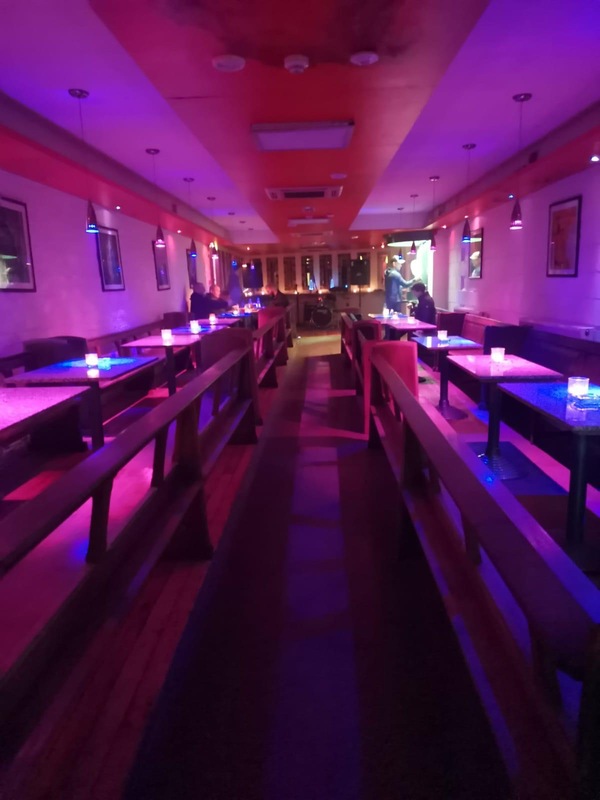
In the UK, where the use of medical cannabis has been legal since 2018, patients are still facing stigma, misunderstanding, and in some cases, legal threats simply for taking their prescribed medicine. Despite progress in regulation and access, a significant gap remains between legality and lived experience. This is where harm reduction centres step in: to provide a safe, compassionate, and non-judgemental space for medical cannabis patients.
What is a Harm Reduction Centre for cannabis?
A harm reduction centre is not a consumption lounge. It is a supportive environment where individuals prescribed medical cannabis can take their medicine safely and legally and without the fear of being harassed, arrested, or reported.
These centres are rooted in the principle of care over criminalisation. They recognise that patients managing conditions such as chronic pain, epilepsy, PTSD, and multiple sclerosis are not criminals - they are individuals seeking to improve their quality of life with a medicine that their doctors cannot provide on the NHS.
Why are Harm Reduction Centres needed in the UK?
While access to medical cannabis has grown, the social and legal landscape is still catching up. Many patients report feeling uncomfortable or unsafe medicating in public or shared spaces, facing stigma in social housing, rented accommodation, or workplaces, and encountering a lack of understanding from police, landlords, employers, or even healthcare professionals.
The fear of judgment or repercussions often leads patients to hide their use, skip doses, or self-medicate in unsafe ways.
Harm reduction centres aim to fill this gap by offering an environment where prescribed patients can take their medicine without fear, staff are experienced and understand the legal protections patients have, and support services and advocacy are available when patients face discrimination or legal misunderstandings.
What happens in a Harm Reduction Centre?
Each centre may be set up differently, but typically they offer a designated space for patients to take their medicine, whether via vapourisers, tinctures, or capsules. Staff are trained to understand medical cannabis prescriptions and UK law. Patients can access health and safety advice, peer support, and signposting to further help. Educational materials for both patients and the public are also available, focused on responsible use and legal rights.
Some may also include wellness services such as yoga, counselling, or group support to help patients feel part of a community - rather than isolated by their condition.
There’s a growing opportunity for musicians, DJs and entertainers to be involved in these spaces too.
Leading by example: The Chillin’ Rooms Liverpool
An excellent example of this approach in action is The Chillin’ Rooms Liverpool, a CTA member who received tailored guidance on how to operate within the UK's current legal and regulatory framework. Their commitment to patient welfare and responsible practice reflects the very ethos of what harm reduction centres can offer - a calm, professional, and legally aware environment where patients can feel supported.
The CTA continues to work with members like The Chillin' Rooms to ensure that harm reduction initiatives are both compliant and compassionate, building a foundation of trust between patients, providers, and policymakers. Read more here.
A model of compassion and progress
Harm reduction centres represent more than just safe spaces - they are a model for compassionate public health policy. By respecting patient rights and promoting informed, legal use, they serve as a bridge between the cannabis community, the public, and policymakers.
They also provide an opportunity to educate the wider community, including employers, housing providers, and law enforcement, about the legitimacy of medical cannabis and the importance of treating patients with dignity.
What needs to Happen Next?
To see harm reduction centres become a reality across the UK, we need clear guidance from national and local authorities to support their creation, legal protections for medical cannabis use in rented housing, care homes, workplaces, and public spaces, greater public awareness and professional training on the rights of medical cannabis patients, and a national strategy to support harm reduction as part of responsible cannabis regulation.
Conclusion
Harm reduction centres are a human rights response to an evolving medical need. In a country where patients are still navigating the grey areas between legality and stigma, these centres provide what’s most needed: safety, dignity, and respect.
By supporting the creation of these centres and recognising the pioneering work of venues like The Chillin Rooms Liverpool, we can help ensure that no patient is left to choose between their health and their freedom.
Published 30th March 2025





